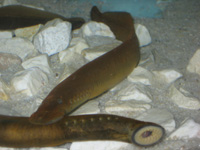Neurons that Control Overeating also Drive Appetite for Cocaine
Researchers at Yale School of Medicine have zeroed in on a set of neurons in the part of the brain that controls hunger, and found that these neurons are not only associated with overeating, but also linked to non-food associated behaviors, like novelty-seeking and drug addiction.
Published in the June 24 online issue of Nature Neuroscience, the study was led by Marcelo O. Dietrich, postdoctoral associate, and Tamas L. Horvath, the Jean and David W. Wallace Professor of Biomedical Research and chair of comparative medicine at Yale School of Medicine.
In attempts to develop treatments for metabolic disorders such as obesity and diabetes, researchers have paid increasing attention to the brain’s reward circuits located in the midbrain, with the notion that in these patients, food may become a type of “drug of abuse” similar to cocaine. Dietrich notes, however, that this study flips the common wisdom on its head. (more…)

